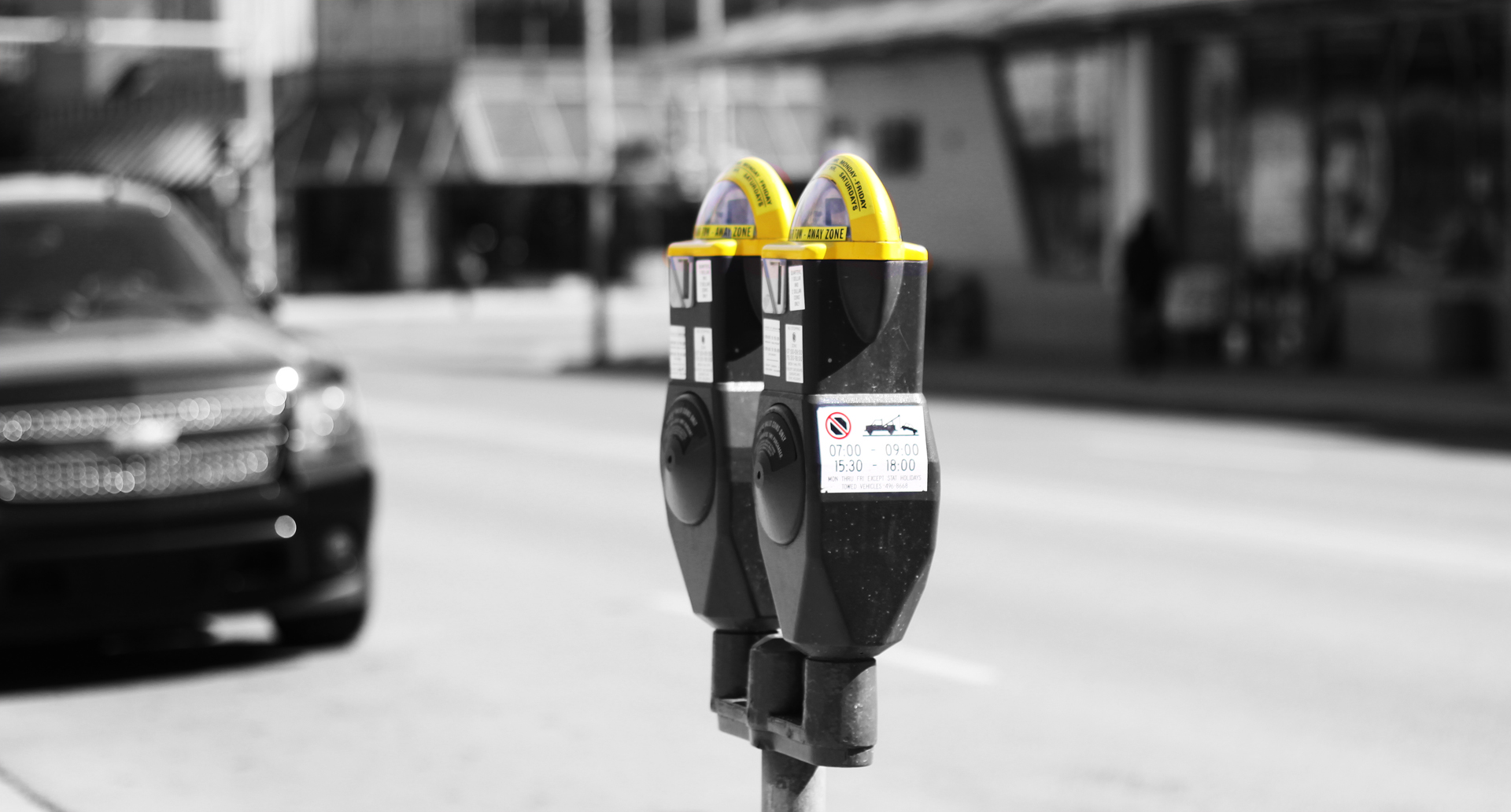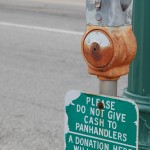On April 30, 2001, Mayor Bill Smith smiled for the collected throng of reporters and photographers and dropped the first coin into Edmonton’s new “Charity Meters.” Thirteen brightly-coloured former parking meters were placed up and down Whyte Avenue inviting coins from Edmontonians, coins that would be passed onto social service agencies in the city. The program was designed to offer Edmontonians an opportunity to donate money and alleviate poverty and homelessness, while decreasing panhandling in the area.
The police and the Old Strathcona Business Association thought that with less change to go around (now that it had found a home inside the red and yellow meters) and with the guilt of refusing alleviated (because there was now an alternate, legitimized way to help) panhandlers would find the area less lucrative and move along.
In 2001, Edmonton—and especially Old Strathcona—was in the midst of a long battle against panhandling. There was a feeling that the city had reached a breaking point: since the early ‘90s, news reports had chastised the practice and called for solutions to “aggressive” panhandling in the city. People were under the impression that panhandling had become so popular that middle-class kids were doing it for giggles before returning to the safety of the suburbs. “The person with his hand out on the avenue these days is just as likely to be an expensively dressed teen as a guy wearing tattered jeans,” argued a 1996 story in the Edmonton Journal.
The meters were in some way the culmination of an Old Strathcona Business Association campaign called, “If you want Change, Don’t give Change.” That program began in 1998 and spread its message through posters the area’s merchants placed in their windows. Cardboard “help cards” were distributed which listed city services available to homeless people. Like the meters, the campaign encouraged giving to charity rather than directly to panhandlers, in a sincere effort to reduce both.
But it didn’t work: within a month of the campaign’s launch, an opposing group called the Old Strathcona Pedestrian Association sprang to life with a message that OSBA’s campaign was mean-spirited and “verge[d] on a kind of intolerance.” About the only thing it did successfully was dramatically reduce the incomes of street newspaper sellers, an activity OSBA actively portrayed as a legitimate alternative to panhandling. In some cases, vendors who had earned $6 per hour before the campaign were reduced to earning only $1 a day.
With the poster campaign failing, OSBA teamed with the Edmonton Police Service and the City of Edmonton to up the ante and bring in the charity meters, which they hoped would offer a hard-to-miss alternative to panhandling.
The use of old parking meters as charity boxes wasn’t a new idea: it seems to have started in Kamloops in the late ‘90s, before moving to Burnaby, Vancouver and finally Edmonton in 2001. The idea remains popular: Calgary started its own program in 2012, and as late as 2014 Windsor contemplated a charity meters program while mistakenly looking toward Edmonton as an example of the program’s success.
The program did see some limited success—for two weeks. In the first two weeks of May, the meters collected around $800. They weren’t popular, however. Not with anyone.
The meters were immediately covered in stickers and graffiti. Two were smashed and robbed and many more had their coin slots shut with glue. Police blamed panhandlers for the vandalism, and citizens complained that the existence of the meters created convenient “hotspots” where panhandlers could attempt to intercept charitable donations before they reached the meter. Far from deterring aggressive panhandling, claimed a letter-writer to the Edmonton Journal, the meters “inadvertently added to the problem.”
In their third week, the thirteen meters collected no more than $60 altogether.
Despite the vandalism and increasingly poor performance, the Old Strathcona Business Association and the Edmonton Police Service vowed to continue. On May 18, only weeks into the program’s lifespan, police spokesperson Wes Bellmore insisted, “We’re going to replace them, clean them up and go on with the program.”
But by August the death knell was sounding. The lack of funds generated and the resources needed for upkeep made the meters were more trouble than they were worth. OSBA executive director Shirley Lowe admitted the program was “a fairly difficult way to raise money,” and even the mayor mused that, though the meters were well-intentioned, “they may as well take them down” if they didn’t serve their intended purpose.
The meters quietly disappeared.
A 2009 report to the city from the Planning and Development Department characterized the 1998 “If you want Change, Don’t give Change” campaign as “unsuccessful” and the 2001 charity meters a “failure.” The report indirectly quotes Shirley Lowe who, when speaking about the failure of the 1998 campaign, said the “social climate at that time wasn’t right for that type of program.”
A year later, however, it appears the time was right. In 2010, Edmonton Police Service and the City of Edmonton launched the “Have a Heart—Give Smart” campaign which, like the “If you want Change, Don’t give Change” campaign of yesteryear, encouraged Edmontonians to refuse panhandlers and give to social service charities instead. And, like the help cards in 1998, the “Have a Heart—Give Smart” campaign offers a “Pocket Guide” of resources for homeless and impoverished people.
This new, softer message has continued until today: the “Have a Heart—Give Smart,” campaign has run every summer since its launch, and remains a fixture on the Edmonton Police Service website. But while the new campaign may have lasted longer than both its forebear and close cousin the charity meters, none has had the staying power of the overwhelming need they’re meant to address.


